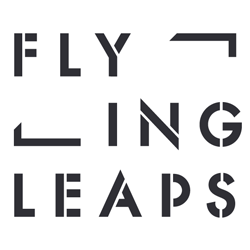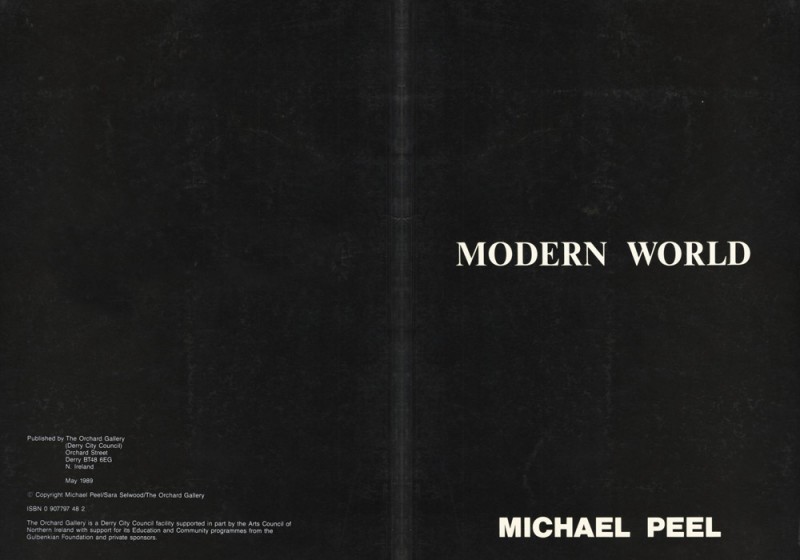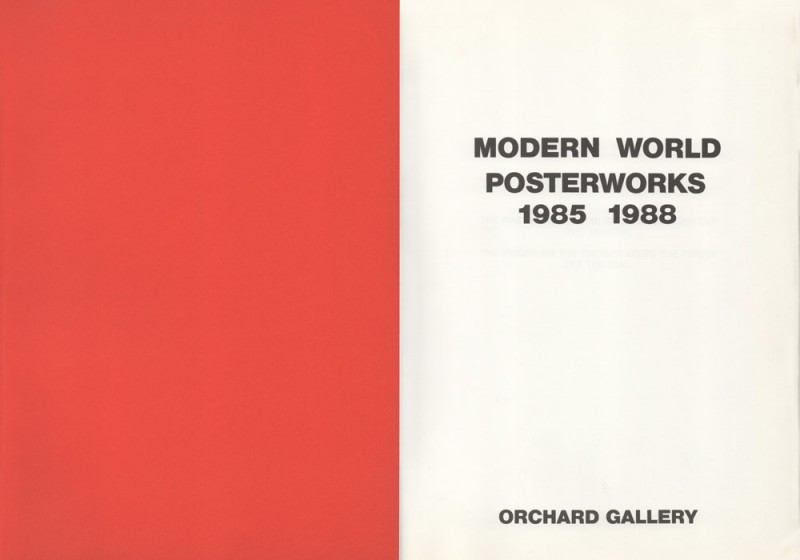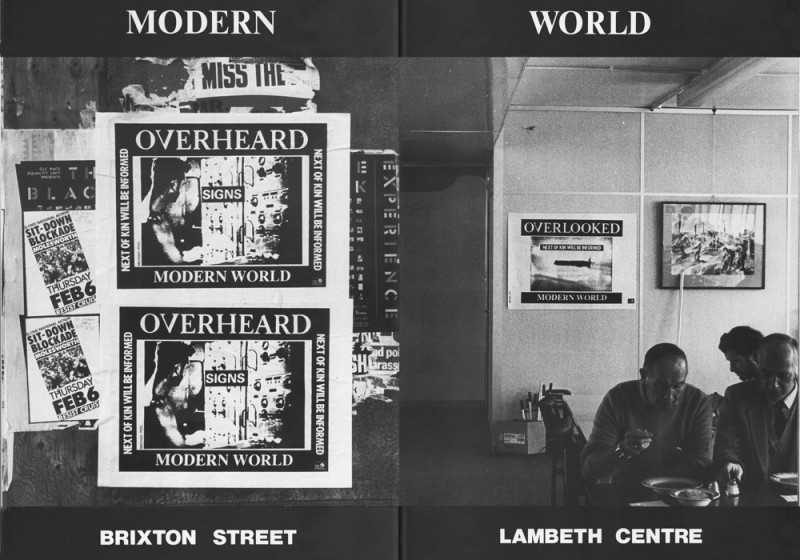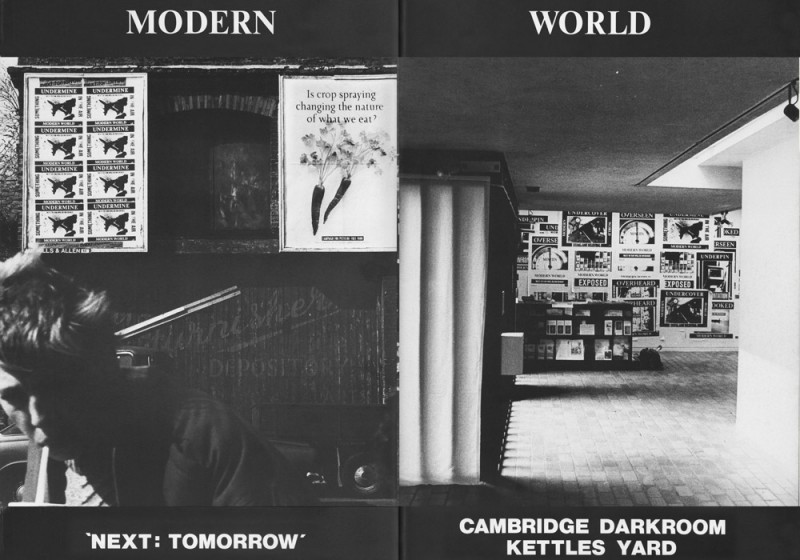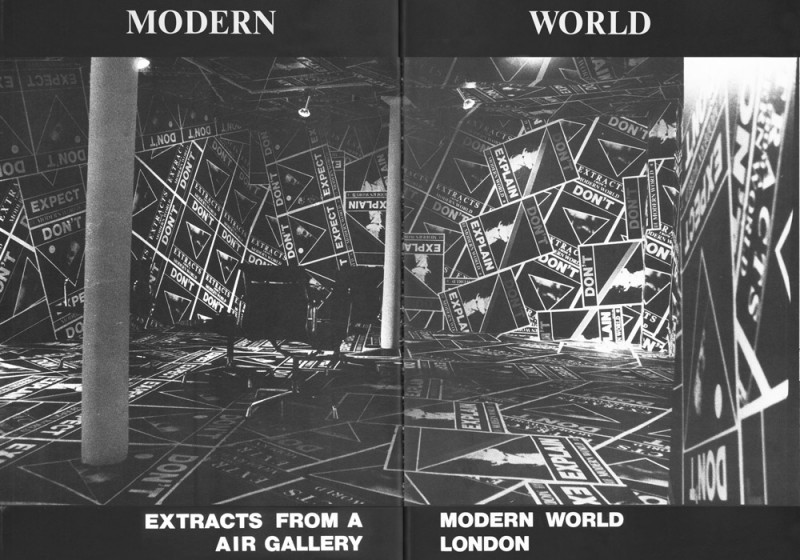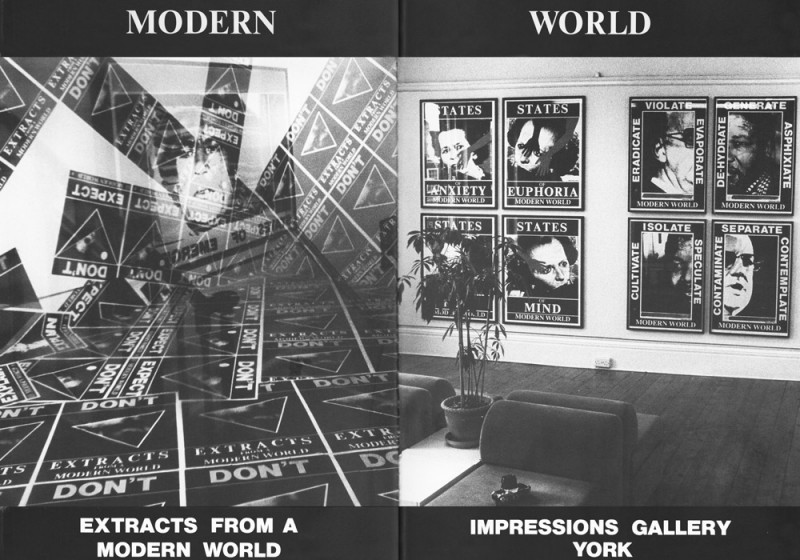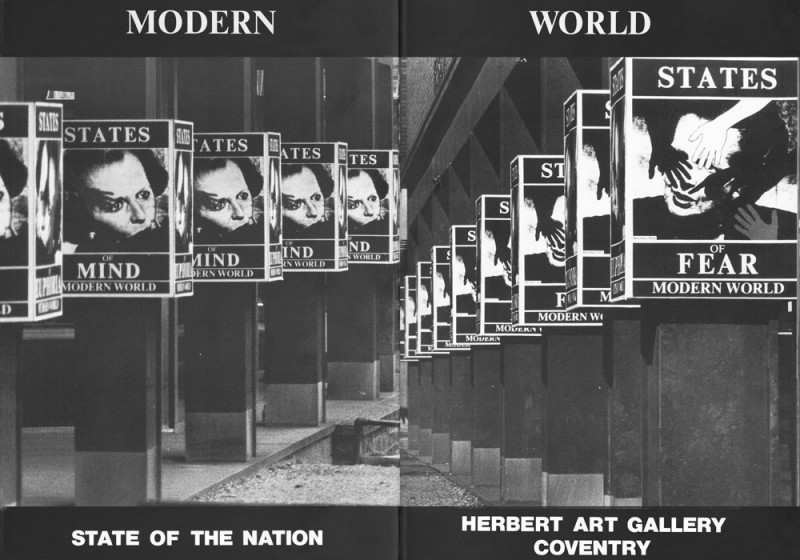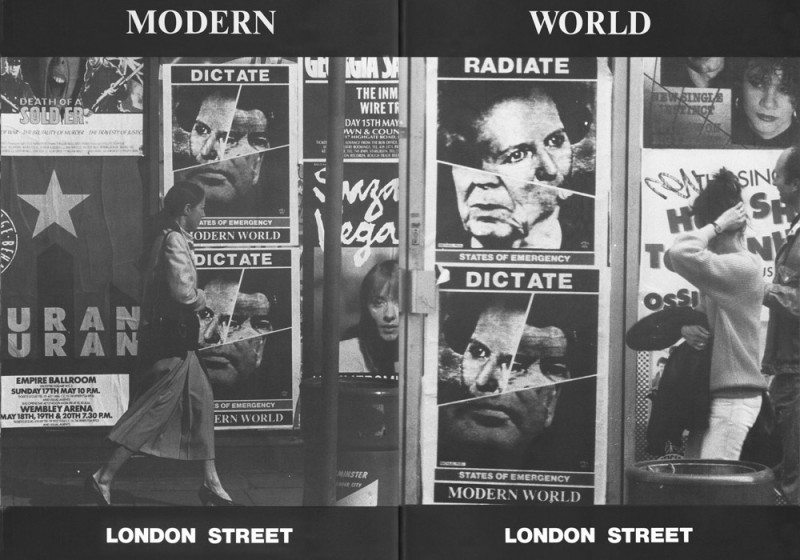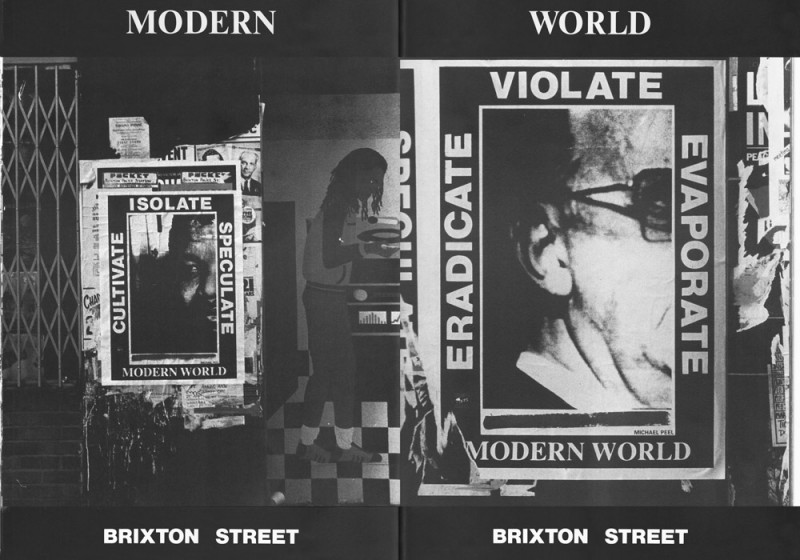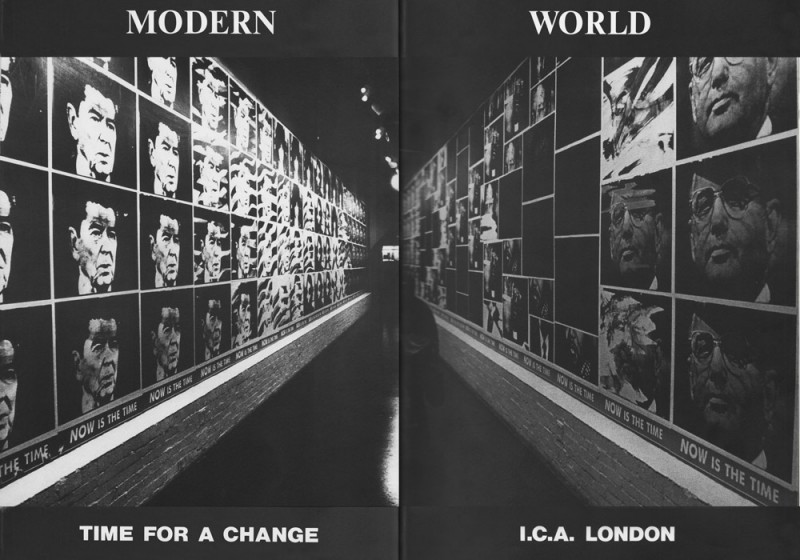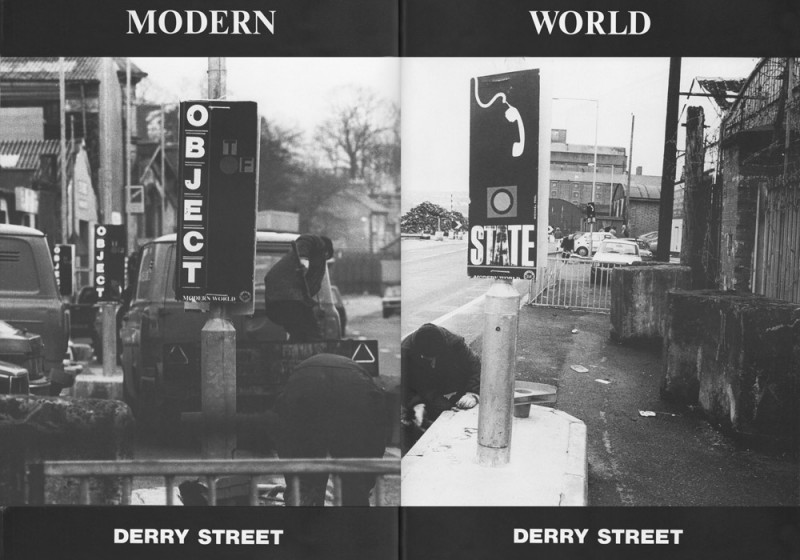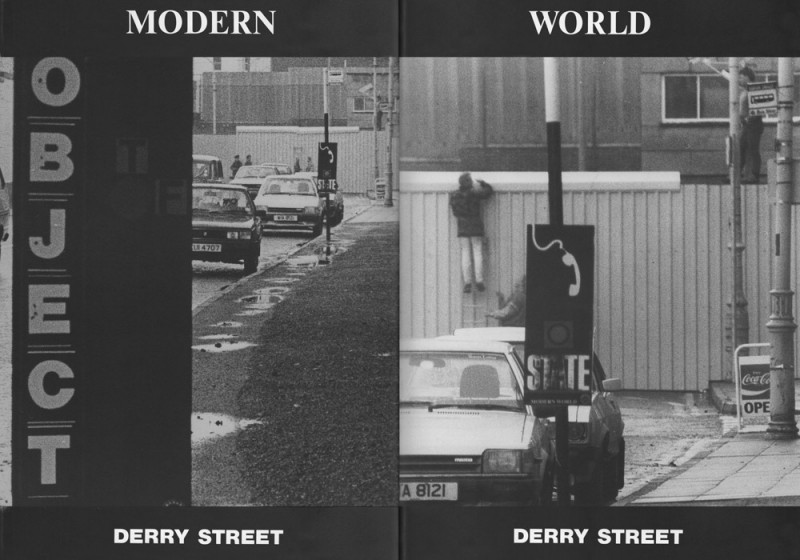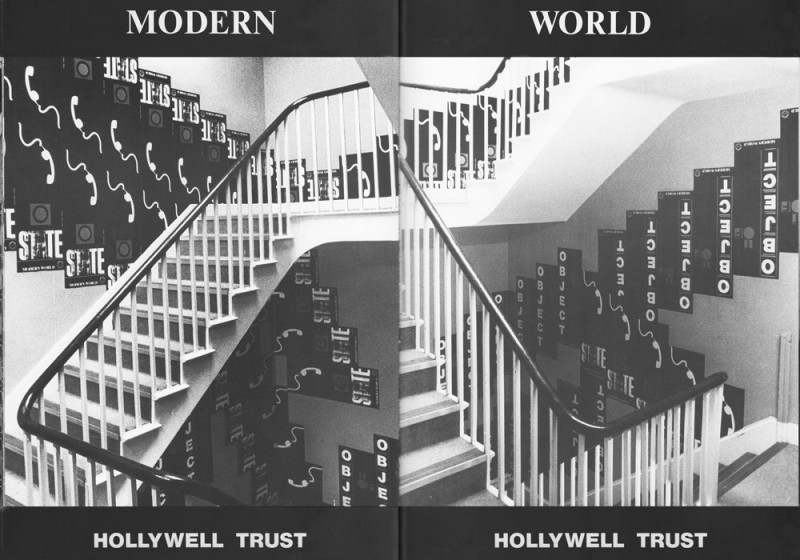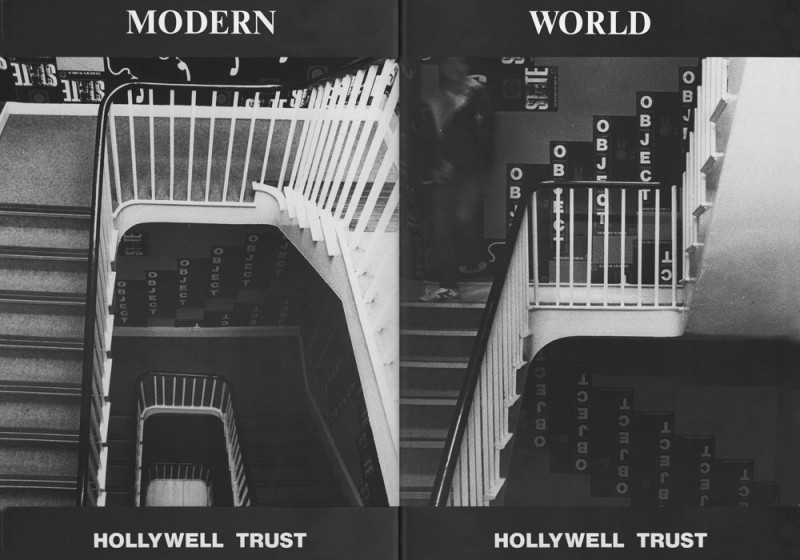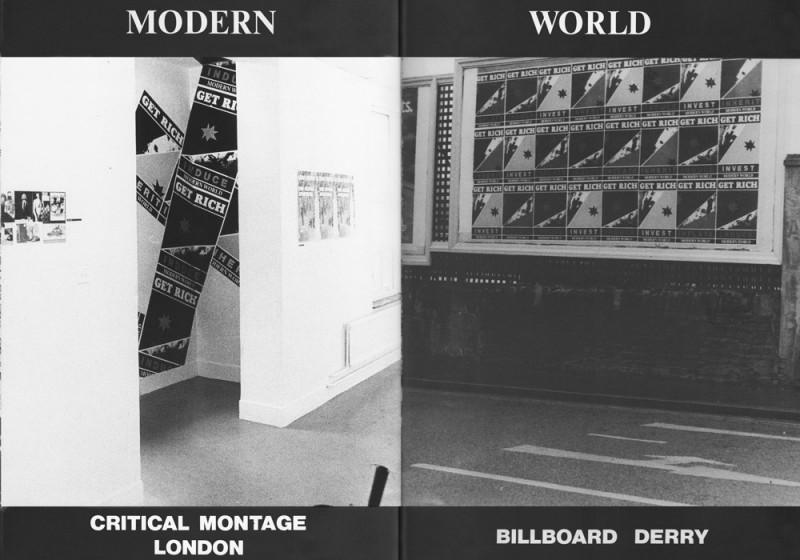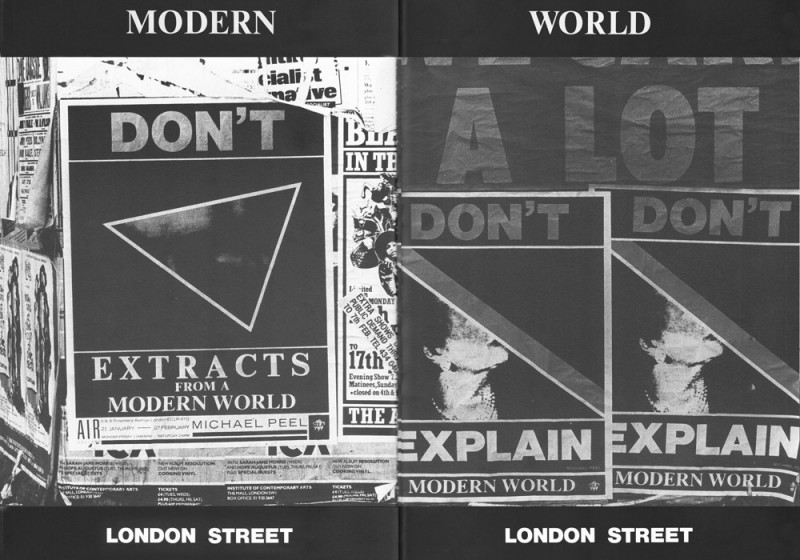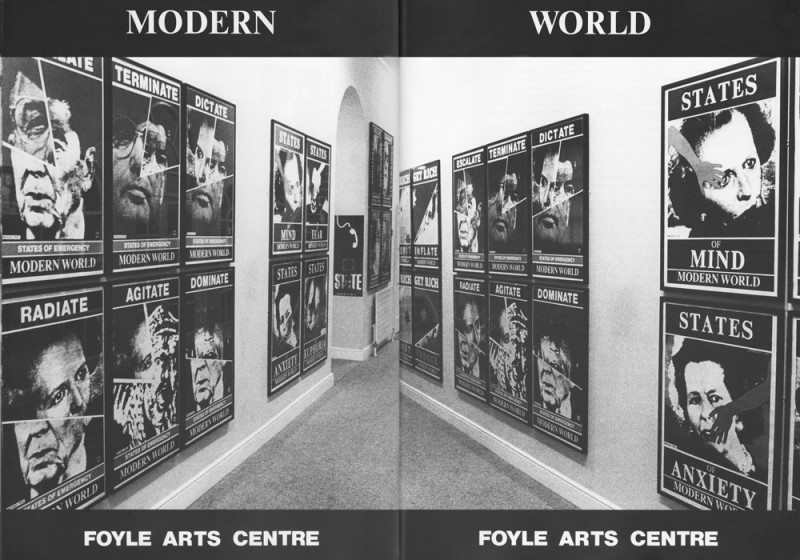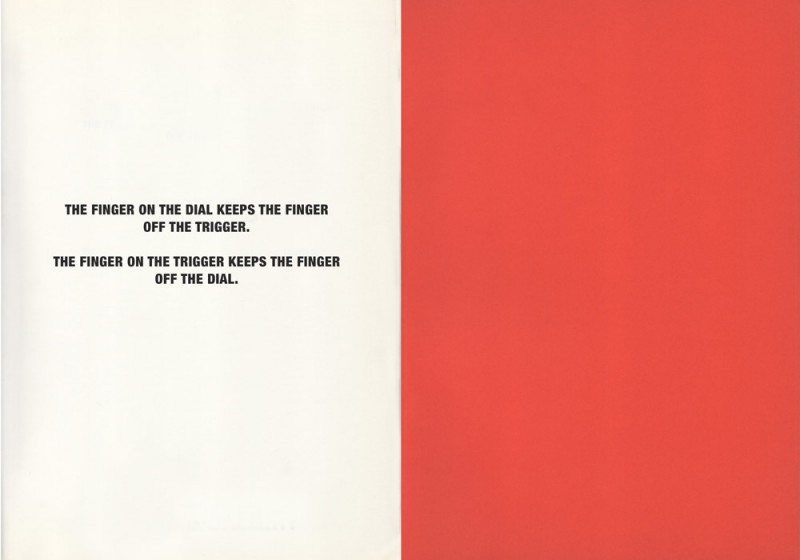Back To The Future:
A Chat & Look at the Work of Michael Peel
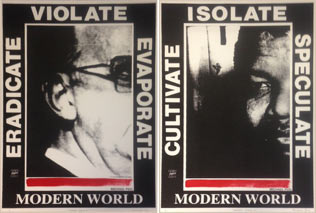
Fig.s 1 and 2 – TIME FOR A CHANGE
The red alert, and somewhat ironic gesture as Abstract Expressionism slowly gave way to a new pedagogic dogma in the form of Conceptual Art… In the 1970s Michael Peel chose not to overly concern himself with either orthodoxy: ‘I thought I would have a bit of fun with the idea of the unique gesture: a one-off red line on every print…’ (Fig.s 1 and 2)
But of course at the core of Peel’s work is anything but fun! Stark text, grainy imagery culled from television and print media, the acid critique of 60s and 70s white-heat of technology myth, the dawn of informational age issues – surveillance and control – in the 80s: ‘I also respond to the surfaces in the work and the traction of enlarged photographic grain…’ A delight in and exploration of materiality then but Peel’s work is first and foremost striking imagery prompted by questions of global ethics.
Even before Margaret Thatcher came to power and began to institute a politics that sought to deny the very existence of society Michael Peel’s art and the way he went about making it evinced a socio-political concern.
In 1977, with support from Battersea Arts Centre, he made a poster project called WALKING, WAITING and WORKING. This involved Peel talking to people on the streets of Wandsworth, photographing them and then coupling this image, an ‘every person’ portrait with a line from the days’ news and a generic physiological fact pertaining to humanity – ‘What Unites Human Beings Is Huge And Wonderful. What Divides Human Beings Is Small And Mean.’ as Bob and Roberta Smith put it more recently – so that by late afternoon Peel’s work was displayed on council notice boards throughout the borough. An energetic engagement with those whose existence the State barely acknowledged, an effort to join together and celebrate the ‘dots of individuals’.
Peel’s concerns as to ‘temporary, immediate and democratic methods of dealing with ideas of power, politics and the media’ had its roots, of course, in early Soviet artists’ thinking and aesthetics. ‘I was impressed with the work of Rodchenko and Lissitzky… But I noticed that while the influence of constructivist design could be seen everywhere: on corporate logos, graphic design on the high street, adverts, even on carrier bags… In the late 70s and 80s this style was totally divorced from any political imperative.’
Whereas the Suprematist Kazimir Malevich sought to rid his work of any trace of subject, Peel combined visual references to contemporary political issues with dynamic, attention grabbing composition. ‘I wanted to make it clear where that visual language came from, to challenge its appropriation by capitalist ideals.’ Rather than merely reproducing the tactics of advertisers, Peel’s displays of his work on billboards questioned the autocratic nature of commercial messages.
Back in 1981 [Margaret Thatcher] described her intention to reform “not merely the way we live, but the way we think.” “The object” she explained “is to change the soul.”
Mrs. Thatcher’s unswerving vision was largely informed by “… things I and millions like me were bought up with: an honest day’s work for an honest day’s pay, live within your means; put a nest egg by for a rainy day; pay your bills on time; support the police.” Reinstating the values which underlie such a morality inevitably involved the curtailment of certain freedoms and expansion of others; the restrictions of particular ‘rights’ and the withdrawal of exemptions. In addition to passing new legislation the government was seen to implement policy through multifarious incentives and disincentives. Conceivably its most effective strategy was the inducement to share in the ‘property owning democracy,’ where success is signified by the acquisition of commodities.
Sara Selwood (1988) Modern World Intro. Essay, The Orchard Gallery Pub. The M. Thatcher quotations are from Robert Harris’ “Prima Donna inter Pares” The Observer 3rd January 1988
It was against a backdrop of this individualist, consumerist mission that Peel in 1985 began to produce his Modern World series of works. One of them, in response to the Conservative government’s cynical approach to handling the nation’s resources, comprised a set of four posters all bearing the ‘instruction’ GET RICH together with one of the following words: INHERIT, INDUCE, INVEST and INFLATE. Fly-posted on the streets or collaged together as an installation these works’ coercive tone, jagged geometry and day-glo notes of colour constituted an impactful riposte to the messages of commercial advertising and nascent neoliberal drive to privatize profit and socialize loss. They seemed incisive, ironic and even poignant displayed on a billboard in what at the time was – at the height of the troubles – a very grim Derry in Northern Ireland…
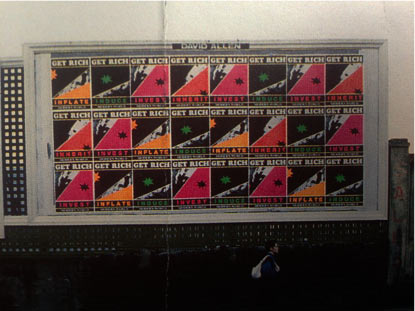
Fig. 4 – GET RICH
‘When I was in Derry the Orchard Gallery Director Declan McGonagle took me out for a drink. It was a very, very tense time. And seemed all the more so with me being an English, London based artist. However, one local started chatting and told me how the Security Forces had set up this telephone number that people could ring anonymously and inform on anyone they considered to be suspicious or supporting the paramilitaries. But more often than not it was used to ‘resolve’ local domestic disputes, if you were having a row about your neighbour’s dog barking you could ring the confidential number and the army would turn up in the small hours and completely tear the place apart with the excuse they had incriminating information on you…’
It was this experience together with seeing pro-security forces’ propaganda posters in Derry that read:
THE FINGER ON THE DIAL
KEEPS THE FINGER OFF THE TRIGGER
And the I.R.A counter propaganda:
THE FINGER ON THE TRIGGER
KEEPS THE FINGER OFF THE DIAL
That led to the anti-surveillance OBJECT TO/OF STATE iteration of Peel’s Modern World series.

Fig. 5
And, as we wound up our chat in the artists’ basement studio, still new assemblages of imagery – fragmented agglomerations of devices, ordnance, scattered cables: broken threads of communication – are taking shape on the walls. Clearly, the artist’s concern with the ways that politics and statecraft impact on individuals and communities persists, ‘I’ve been taking lots of photographs of surveillance helicopters recently…’ While they’re watching ‘us’ Michael Peel is watching and reflecting on ‘them’. So many important issues, debates and questions that to this day remain woefully unresolved.
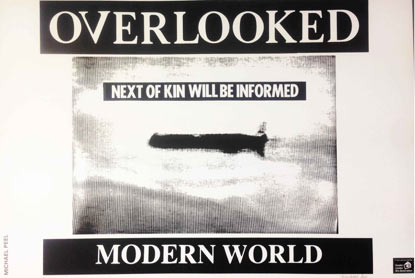
Fig. 6 – OVERLOOKED
Adrian Burnham 2016
Many thanks to Michael Peel for taking the time to talk to www.flyingleaps.co.uk and share his work.
And also to Prof. Sara Selwood for permission to quote from her text.

